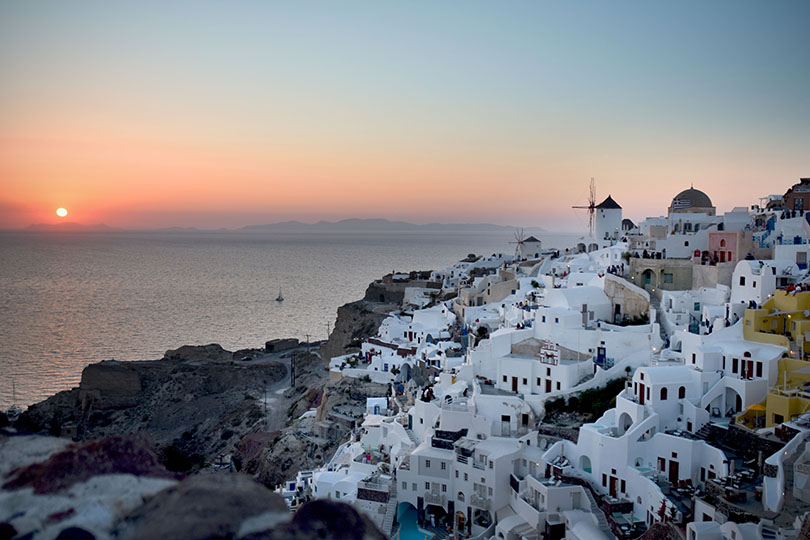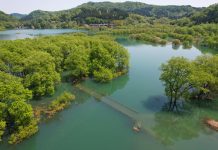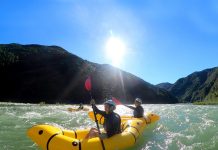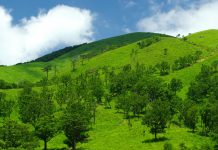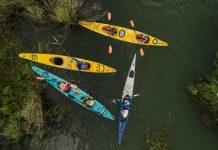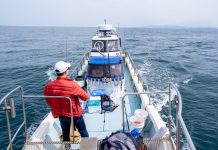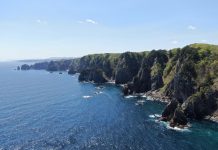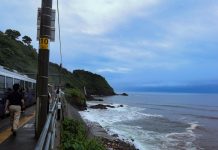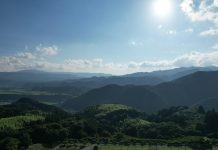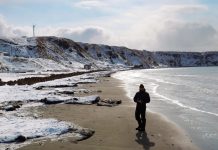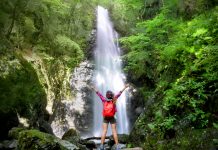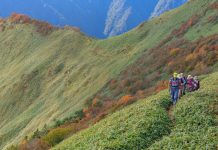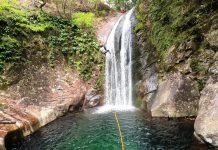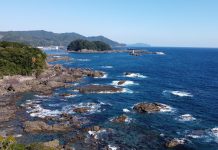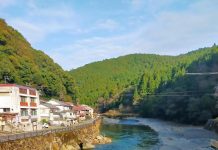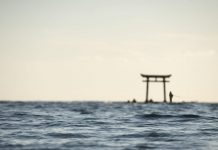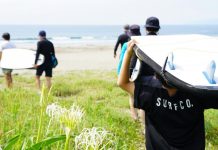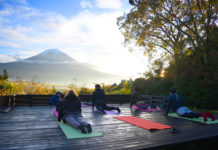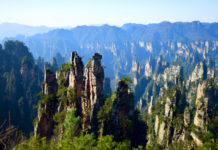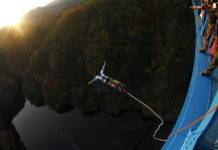The region has a rich history that spans more than 3,000 years and terrain ranging from jagged mountains to rolling plains to arid islands—and some of the world’s finest wine and cuisine. It’s no wonder the area thrives on tourism. Anyone who has visited will tell you it’s nearly impossible to take in Greece in one trip. However, many do and end up battling crowds at famous landmarks and spending nights at the same trendy spots in town. Veer off the path and you’ll discover it’s not hard to find some great adventures and the real Mediterranean experience.
Aegean Adventures
The isolated island of Folegrandros is a great starting place to find an authentic Greek experience. The charming, laid-back island is home to just over 700 residents. Lying on the southern edge of the Cyclade Islands, it has no airport and its one port at Karavostasi only welcomes ferries; no major cruise ships stop here.
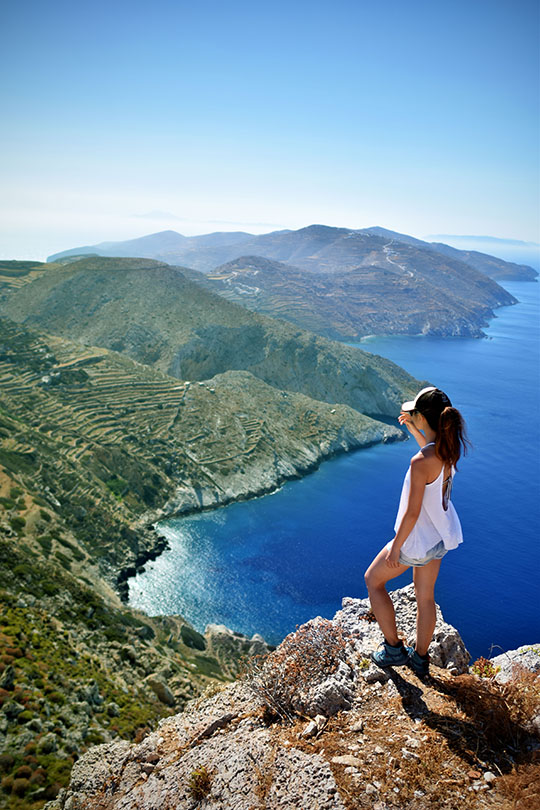
Like many remote villages, Folegandros has had its share of young adults leaving to chase their dreams in big cities on the mainland. Yet for a handful of outdoor enthusiasts, divers and tour operators—including Aegean Outdoors— Folegandros is home sweet home.
“Being Greek, and growing up in Greece, you see more of what this country has to offer than the standard recipe of sun, sand and beaches,” says Epameinondas “Nondas” Iliadis, founder of Aegean Outdoors. “I want people to see both the touristy and non-touristy spots from the eyes of an adventurer. At hidden gems like Folegandros, you can feel the energy of our country as you discover history while doing your favorite outdoor activities. We hope travelers can pass on this energy to their families and friends back home.”
A passion for the outdoors and a strong commitment to sustainable tourism is at the heart of Aegean Outdoors. Working with small businesses, guides, hotels and eateries, they promote Greece as a year-round outdoor destination and offer sea kayaking, rafting, hiking, cycling, diving and sailing day trips and multi-day tours. These experiences are made more special by the guides, who not only share an insider perspective but also stories of ancient Greek history and mythology you might otherwise miss.
The journey through Folegrandos follows the one road across the island. The first stop from the port is the main hub of Hora. This settlement is a photographer’s dream with its quintessential Cycladic, whitewashed buildings and bougainvillea spilling out of windows. Meandering alleys lead to open-air squares and cobblestone streets made out of Folegandros shale give off a sea green sheen. Most of the island’s accommodation and taverns are based here.
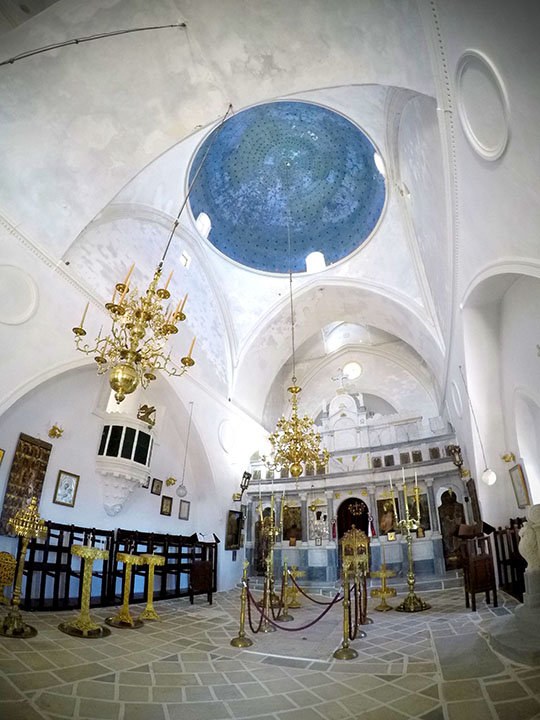
The zigzagging trail leading up to the Church of Panagia (Virgin Mary) perched dramatically on a hill is an iconic image of Folegandros. This trail starts from Hora and is an easy 15 to 20-minute walk up.
Head back down into Hora and continue north along the road to Ano Meria. During the 1930s when Greece was under dictatorial rule, exiles found and settled on this island, taming Folegandros’ rugged soil and braving minimal rainfall and harsh winds by building terraced farmland lined with strong stone walls. Hidden within the rocky terrain are trails leading to beaches, anemomilos (windmills) and one-room churches.
Stop at Irini—a mini grocery store and restaurant. The shop owner, Irene, welcomes guests while sitting at one of the tables cutting grape leaves. It feels like you’ve stepped into someone’s kitchen for a home-cooked meal. Matsata (Greek pasta ribbons) with lamb and tomato-based sauce and stuffed bell peppers are Irene’s trademark dishes, flavored by the island’s sage, thyme, oregano, capers, olives and lemons. The meal ends with complimentary Greek yogurt topped with honey-soaked raisins.
Folegandros may only span 32 square kilometers, but there’s still plenty to explore if you take a boat along the coast, where you’ll often have beaches and snorkel spots all to yourself. Don’t miss the caves, which are only accessible by sea.

From the outside, Georgitsi looks like a regular cave, but dive beneath and you’ll find rich underwater ora, small groupers and crabs at the entrance. Inside, stalactites thousands of years old hang low from the ceiling. The cave water has a luminescent azure glow similar to Italy’s Blue Grotto (minus the long wait and crowds).
Tucked below the sea cliff where the Church of Panagia stands is Chrisospilia (Golden Cave). Shrouded in history and mystery, and covered in ancient engravings, Chrisospilia is said to be one of the oldest and largest caves in Greece.
The only way to reach Chrisospilia is by swimming from the boat to the base of the “Hellenic Steps,” an archaic stairway leading 30 meters up to the cave entrance. This short swim is easy when calm but can be dangerous if the north wind is blowing, as strong currents push you towards jagged rocks. Unless you have special authorization to this protected archaeological site, this is as far as you are allowed to go. But gazing upon the crumbling steps is worth the effort.
Archaeologists have unearthed Roman cisterns and human bones in Chrisospilia’s first chamber. The second chamber contains stalactites and engravings dating back to 400 B.C. The names belong to young men who, as part of a religious coming-of-age ceremony, proved their bravery by reaching the cave, then carved their names into the ceilings and walls. There are about 400 names recorded here.
For first-time travelers to Greece, Aegean Outdoors arranges a well-rounded yet unique view of the country that includes Folegandros, Athens and Santorini. Instead of your typical Athens bus tour and rushed gawking at the Parthenon, soak in this Hellenic city with some urban hiking up Athens’ undisturbed hills for varying views of Acropolis. If you’re lucky, you might catch a glimpse of a wedding at a local Greek Orthodox church.
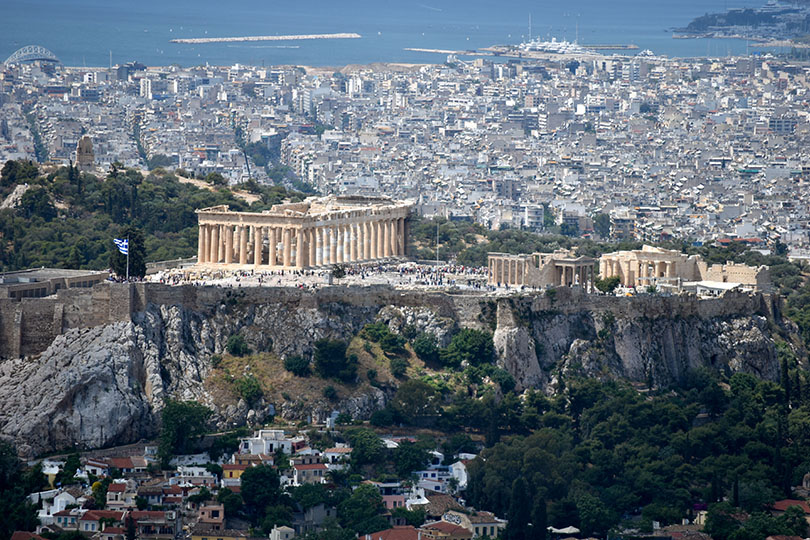
While luxury travel magazines and Instagrammers have overly hyped Santorini, the picturesque island and romantic sunset views from Oia make it well worth the visit. During the day, kayak along the southern coast to gaze upon sheer white marble cliffs. Popular stops only accessible by boat include Red Beach, White Beach and Black Beach. After working up an appetite, join a cooking course at a local home to make kitchen favorites like tzatziki yogurt sauce, eggplant moussaka and shrimp saganaki.
Contact Aegean Outdoors to book your next adventure.
